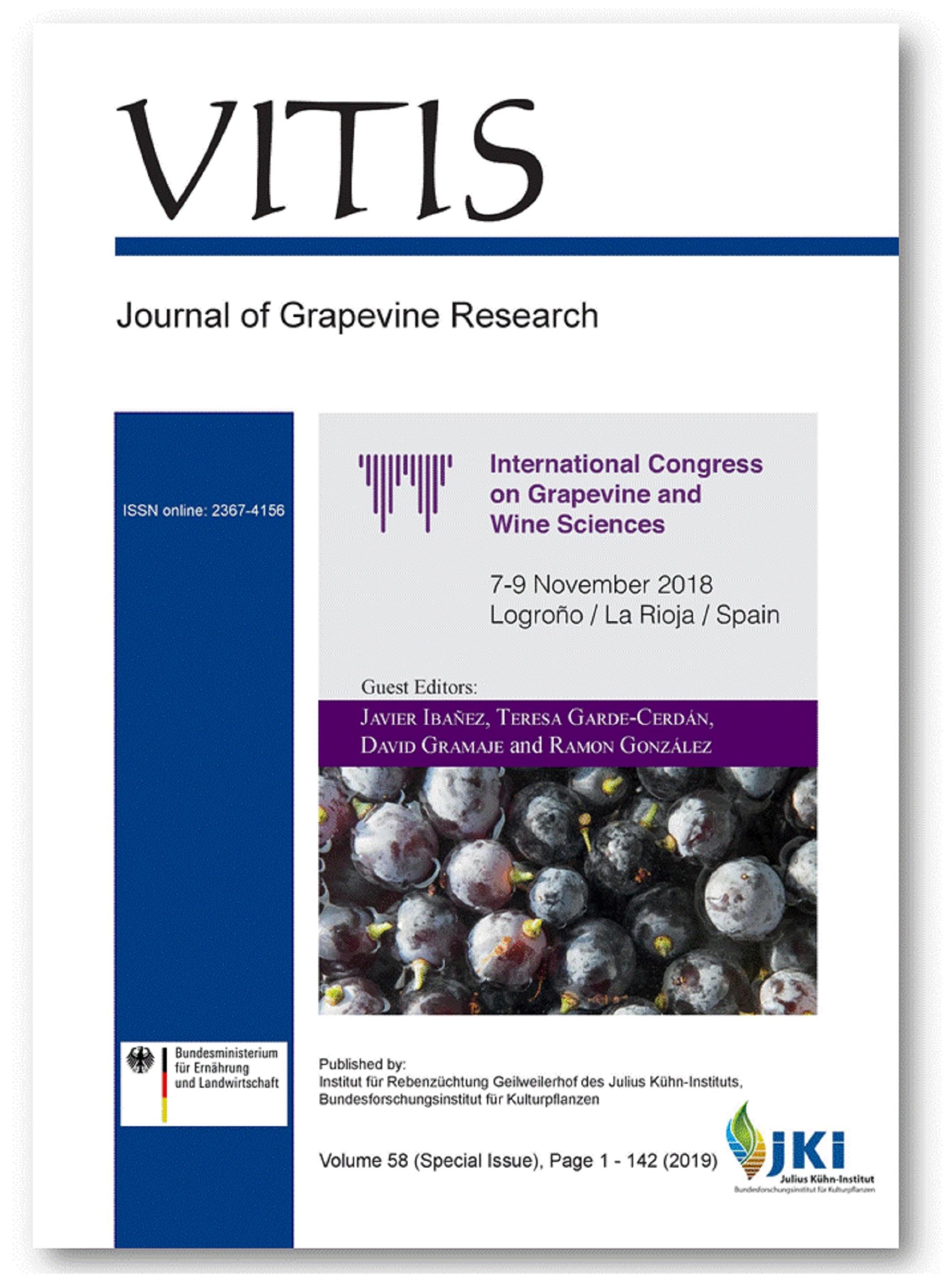Evaluation of glutathione content in white grape varieties
DOI:
https://doi.org/10.5073/vitis.2019.58.special-issue.21-24Keywords:
glutathione; hydroxicinnamic acids; must; wine; white varieties.Abstract
The aim of this work was to evaluate the content of glutathione in the grape, must and wine of nine white varieties authorized in the Qualified Designation of Origin Rioja (Spain): 'Chardonnay', 'Garnacha Blanca', 'Malvasía', 'Maturana Blanca', 'Tempranillo Blanco', 'Turruntés', 'Sauvignon Blanc', 'Verdejo' and 'Viura'. The results obtained showed important varietal differences in the concentration of GSH. 'Sauvignon' and 'Tempranillo Blanco' presented high levels of this compound in grape, must and wine. 'Verdejo' and 'Turruntés' registered high values in grape, which decreased notably in must and wine. In general, the GSH content decreased in musts due to oxidative processes. In 'Chardonnay', 'Garnacha Blanca', 'Maturana Blanca' and 'Viura' an increase was observed in wines, which could be caused by the inoculated yeast. The 'Malvasía' and 'Maturana Blanca' varieties registered the lowest level of this compound. The ratio of hydroxycinnamic acids to glutathione, indicator of the susceptibility of oxidation of musts, showed significant varietal differences, was lower in 'Sauvignon Blanc' and higher in 'Garnacha Blanca'.
Downloads
Published
Issue
Section
License
The content of VITIS is published under a Creative Commons Attribution 4.0 license. Any user is free to share and adapt (remix, transform, build upon) the content as long as the original publication is attributed (authors, title, year, journal, issue, pages) and any changes to the original are clearly labeled. We do not prohibit or charge a fee for reuse of published content. The use of general descriptive names, trade names, trademarks, and so forth in any publication herein, even if not specifically indicated, does not imply that these names are not protected by the relevant laws and regulations. The submitting author agrees to these terms on behalf of all co-authors when submitting a manuscript. Please be aware that this license cannot be revoked. All authors retain the copyright on their work and are able to enter into separate, additional contractual arrangements.



